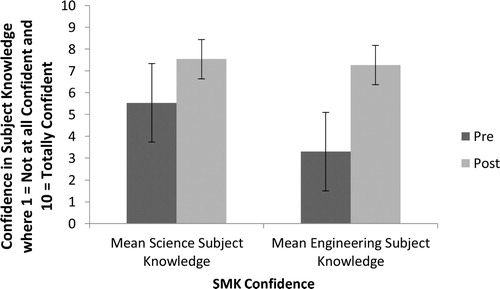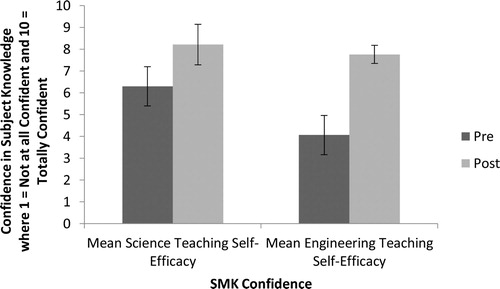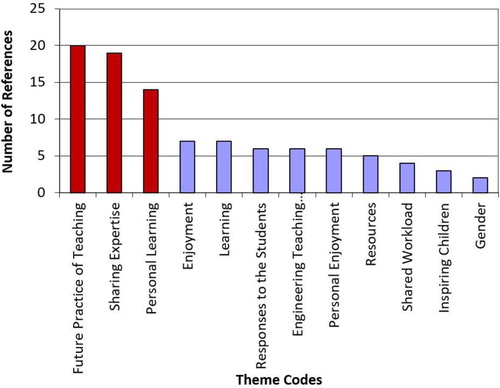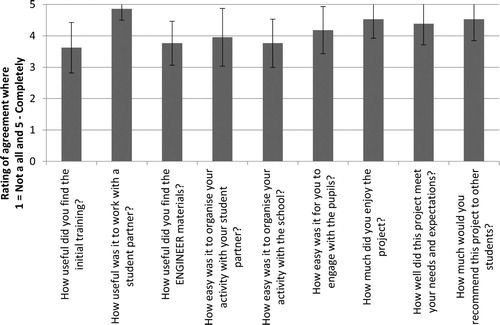Figures & data
Table 1. Participant characteristics.
Table 2. Pre and post participation group range and mean science and engineering SMK confidence ratings.
Table 3. Pre and post participation group range and mean science and engineering self-efficacy ratings.
Table 4. Coded themes and frequency of responses within these themes from the pre-service teachers.





